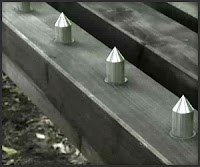Energy Bursts From Star-Forming Galaxies In Early Universe
The early formation of galaxies was characterized by quick succession of new stars. During those early days of universe, enormous energy was released in the form of fireworks, which directly caused a massive central black hole in our galaxies.
The genesis of galaxies was aptly described by Dutch astronomer Peter Barthel from the Kapteyn Institute of the University of Groningen, as captured in the 19 Sep issue of the Astrophysical Journal Letters.
The formation of Milky Way can certainly not be described as abrupt as only a star is formed every year. If you think about the hundred billion of stars in our Milky Way, this is almost a real painful, slow process. In fact, there was nothing spectacular as the Milky Way came into existence; it was characterized by an inactive central black hole, accompanied by occasional energy bursts (often weak) as passing star intruded upon its territory or gas cloud floated into the area.
Bright And Exotic Radiation
Such descriptions definitely do not gel well with the image of 'active' galaxies we tend to associate with the early universe. We surely can identify with radio galaxies and quasars: In fact, the bright and exotic radiations which commonly accompanied these objects are detectable from another corner of the universe. Of course the universe is a big place, and any intense light could look dim from that kind of distance, if it is visible at all. But their manifestations can be detected in the form of luminous radio, UV or X-ray radiation, which accumulates into massive central black holes.
Image [Click to enlarge]
This early theory of universe genesis stayed until ESA's Herschel space telescope was unveiled in 2009. It is comparatively larger than Hubble from NASA, and it is equipped with far-infrared wavelengths apparatus, which is capable of picking up heat radiation as they were being unleashed during the formation of massive galaxies and also the generation of smaller planets and stars.
Background
Peter Barthel was in the Herschel project from 1997. He headed an observational program on faraway radio galaxies and quasars. Throughout his involvement in the Herschel projects, he has been responsible for seventy such objects. As expected, those inspections reveal that bright far-infrared radiations emitted throughout the universe.
Simultaneous Glows
These evidences are strong hints that the vigorous formation of stars are still continuing in the galaxies, despite millions of years in the making. It also implies many growing black holes in the middle of these galaxies (as demonstrated by the ever-going radiations), which indicates that the galaxies have never stop to grow.
The point to draw here is that there is a linear relationship between massive galaxies and massive black holes. Barthel concluded that the largest, most powerful and most distant spectacular objects in the universe are not the exclusive domains of active galaxies. Indeed stars and black holes are continually formed under similar phases, regardless of the nature or intensity of radiations.




Comments
Post a Comment